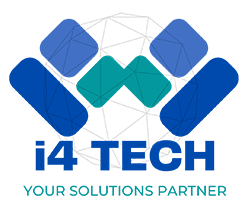Optimizing Your IT Infrastructure for Efficiency and Cost Savings
Title: Optimizing Your IT Infrastructure for Efficiency and Cost Savings
In today’s fast-paced digital landscape, businesses are increasingly reliant on technology to drive growth and innovation. However, with the rising complexity of IT infrastructure, organizations face the challenge of ensuring their systems are not only efficient but also cost-effective. Efficient IT infrastructure optimization is essential for businesses to stay competitive while keeping operating costs in check.
At i4 Global Services, we specialize in helping businesses streamline their IT infrastructure to maximize productivity and achieve long-term cost savings. In this blog post, we’ll discuss the key strategies and best practices that can help your organization optimize its IT infrastructure, improve efficiency, and reduce costs.
1. Assess Your Current IT Infrastructure
Before you can optimize your IT infrastructure, it’s essential to understand your current system and its capabilities. Conducting a thorough assessment of your IT environment will help you identify inefficiencies, areas of waste, and opportunities for improvement.
- Inventory All IT Assets: Take stock of your hardware, software, and network systems. Understand the age, usage, and performance of each component. Are there outdated servers, underused software licenses, or redundant network devices?
- Evaluate Performance: Identify bottlenecks, slow processes, and frequent downtimes. Monitoring tools can provide insights into areas that need immediate attention.
By assessing your infrastructure, you can uncover hidden inefficiencies and pinpoint which systems need upgrading or replacement.
2. Consolidate and Virtualize
One of the most effective ways to improve IT efficiency and reduce costs is through server consolidation and virtualization. These strategies allow you to reduce the number of physical servers you need while improving your system’s performance and scalability.
- Server Consolidation: Instead of relying on multiple physical servers to handle different tasks, consider consolidating workloads onto fewer servers. This reduces hardware costs, minimizes energy consumption, and simplifies maintenance.
- Virtualization: By utilizing virtual machines (VMs), businesses can run multiple virtual environments on a single physical server. Virtualization enables you to make better use of existing hardware, improve system flexibility, and streamline management.
Both server consolidation and virtualization can dramatically cut costs while boosting performance.
3. Adopt Cloud Computing
The cloud has become an indispensable part of modern IT infrastructure, offering scalability, flexibility, and significant cost-saving opportunities. By transitioning to the cloud, businesses can reduce the need for on-premises hardware, eliminate the costs of system maintenance, and scale resources as needed.
- Cloud Solutions: Consider leveraging public cloud services such as Amazon Web Services (AWS), Microsoft Azure, or Google Cloud Platform to offload infrastructure management and scale with ease.
- Hybrid Cloud: For businesses that require more control over sensitive data, a hybrid cloud solution can provide a combination of on-premises infrastructure and cloud services to balance security and flexibility.
- Cost Savings: By moving to the cloud, businesses only pay for the resources they use, which can significantly reduce upfront capital expenditures and ongoing operational costs.
Cloud adoption allows businesses to be more agile and reduce IT costs in the long run.
4. Embrace Automation and Managed Services
Automation is a game-changer in optimizing IT infrastructure. By automating routine tasks and processes, businesses can free up valuable resources and improve efficiency. Additionally, outsourcing certain IT functions to managed services providers (MSPs) can further reduce costs and enhance performance.
- Automate Routine Tasks: Automating backups, software updates, patch management, and system monitoring can significantly reduce the need for manual intervention. This improves uptime and ensures that IT teams focus on more strategic tasks.
- Managed IT Services: MSPs can manage everything from network monitoring to cybersecurity, allowing businesses to focus on their core operations. This model provides access to expert support without the need for an in-house team, leading to cost savings and improved efficiency.
Automation and managed services help reduce human error, improve productivity, and enhance the overall performance of your IT infrastructure.
5. Optimize Network and Data Storage
Optimizing your network and data storage systems is essential for improving efficiency, performance, and security. With the ever-increasing volume of data being generated, businesses must implement strategies to manage and protect their data effectively.
- Network Optimization: Ensure that your network is designed to support high-demand applications and workloads. This may involve upgrading network equipment, optimizing bandwidth, or implementing software-defined networking (SDN) to improve flexibility and reduce network downtime.
- Data Storage Solutions: Consider implementing data deduplication and compression technologies to optimize storage space and reduce costs. Also, evaluate storage solutions like cloud storage or hybrid storage to provide scalable, cost-effective options.
- Security Considerations: Keep security a top priority by ensuring that your network and data storage systems are properly protected with firewalls, encryption, and access controls.
By optimizing your network and storage, you can improve performance, reduce downtime, and lower costs associated with data management.
6. Implement Energy-Efficient Solutions
With energy costs rising, optimizing the energy consumption of your IT infrastructure can lead to significant savings. Businesses should consider incorporating green IT solutions that reduce energy usage while improving the overall sustainability of their operations.
- Energy-Efficient Hardware: When purchasing new equipment, look for energy-efficient devices such as low-power servers, energy-efficient cooling systems, and LED lighting in data centers.
- Optimize Cooling Systems: Data centers and server rooms often require significant cooling to maintain proper temperatures. Consider using hot aisle/cold aisle containment systems, efficient cooling solutions, or even liquid cooling to reduce energy consumption.
Investing in energy-efficient IT solutions not only reduces costs but also supports sustainability efforts, which are increasingly important to businesses and customers alike.
7. Continuous Monitoring and Performance Management
The key to maintaining an optimized IT infrastructure is continuous monitoring. By regularly assessing the performance of your systems, you can ensure they are operating at peak efficiency and make adjustments when needed.
- Real-Time Monitoring: Use monitoring tools to track server health, network performance, and application uptime. Monitoring helps detect issues before they become major problems, minimizing downtime and maintaining business continuity.
- Performance Management: Continuously analyze your IT systems to identify areas for optimization. This includes reviewing server utilization, software performance, and network traffic to find inefficiencies and areas for improvement.
Continuous monitoring ensures that your infrastructure remains optimized, reduces potential issues, and enhances overall system performance.
Conclusion: Achieving Efficiency and Cost Savings
Optimizing your IT infrastructure is a crucial strategy for any business that wants to stay competitive while keeping costs under control. By assessing your current system, embracing cloud computing, consolidating resources, automating processes, and focusing on energy efficiency, you can achieve significant cost savings and improve the overall performance of your IT environment.
At i4 Global Services, we specialize in helping businesses streamline their IT infrastructure for maximum efficiency and cost savings. With our expert guidance and cutting-edge solutions, we can help you optimize your IT environment and set your business up for long-term success.


